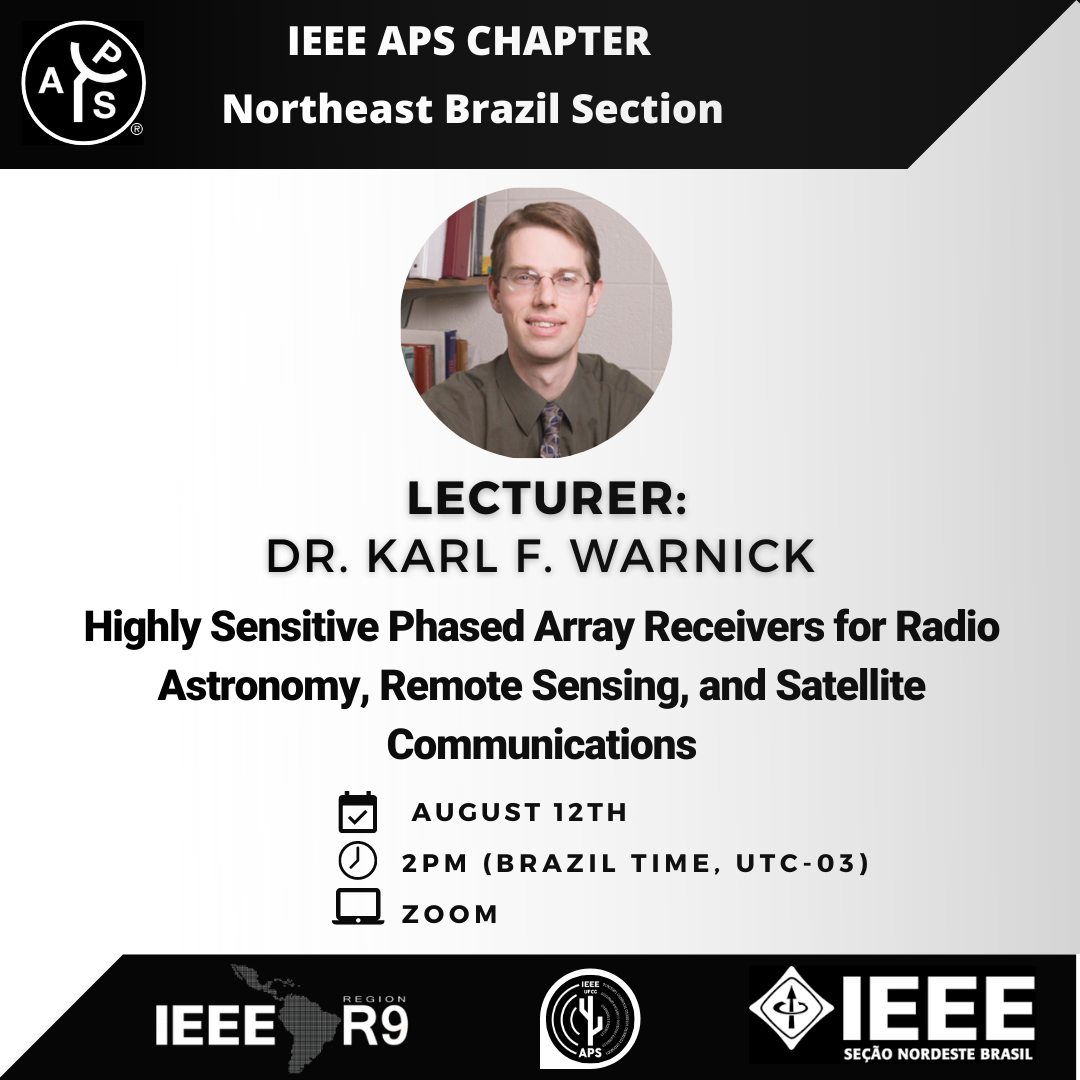IEEE APS CHAPTER LECTURE - Dr. Karl F. Warnick - Highly Sensitive Phased Array Receivers for Radio Astronomy, Remote Sensing, and Satellite Communications

For most wireless communication systems, the signal environment is dominated by ambient noise and interference, which means that improving the efficiency of the antenna does not increase performance much. When the signal comes from the sky (radio astronomy and satellite communications), the situation is very different. High aperture efficiency, radiation efficiency, spillover efficiency, and low noise electronics are everything in terms of the performance of a receiver. Bent metal antennas (horns and parabolic dishes) are very efficient and for the last century have been working just fine. The catch is that these kinds of receivers have a fixed beam pattern. We would like to use smart antennas, phased arrays, and adaptive antennas for astronomy and satellite applications to have more control over the beam and more flexibility in selectively receiving signals of interest. Most existing array technologies are targeted for terrestrial wireless communications and are too lossy, noisy, and inefficient for applications that need high sensitivity. Over the past 20 years, the BYU Radio Astronomy Systemsresearch group has used numerical modeling, antenna design optimization, network theory, microwave noise analysis, and array signal processing theory to produce some of the most sensitive phased arrays ever demonstrated. This presentation will tell the story of this research field and show how the results have influenced the IEEE’s governing standard for definitions of antenna terms and enabled new sensors, satellite receivers, and scientific instruments.We will start by examining the four great mysteries surrounding the universe’s structure and discuss why dark matter, dark energy, cosmic inflation, and supermassive black holes are important in cosmology and astrophysics and how highly sensitive receivers help us learn more about the early history of the universe.
Date and Time
Location
Hosts
Registration
-
 Add Event to Calendar
Add Event to Calendar
- Contact Event Host
- Co-sponsored by SBC05141B - Federal Univ Of Campina Grande, AP03
Speakers
Highly Sensitive Phased Array Receivers for Radio Astronomy, Remote Sensing, and Satellite CommunicationsKarl F. Warnick
Biography:
Karl F. Warnick is the Graduate Coordinator for the Department of Electrical and Computer Engineering at Brigham Young University. He received the B.S. degree in Electrical Engineering and Mathematics and the Ph.D. degree in Electrical Engineering from Brigham Young University (BYU), Provo, UT, in 1994 and 1997, respectively. From 1998 to 2000, he was a Postdoctoral Research Associate and Visiting Assistant Professor in the Center for Computational Electromagnetics at the University of Illinois at Urbana-Champaign. Since 2000, he has been a faculty member in the Department of Electrical and Computer Engineering at BYU. Dr. Warnick has published many books, scientific articles and conference papers on electromagnetic theory, numerical methods, antenna applications, and high sensitivity phased arrays for satellite communications and radio astronomy.
